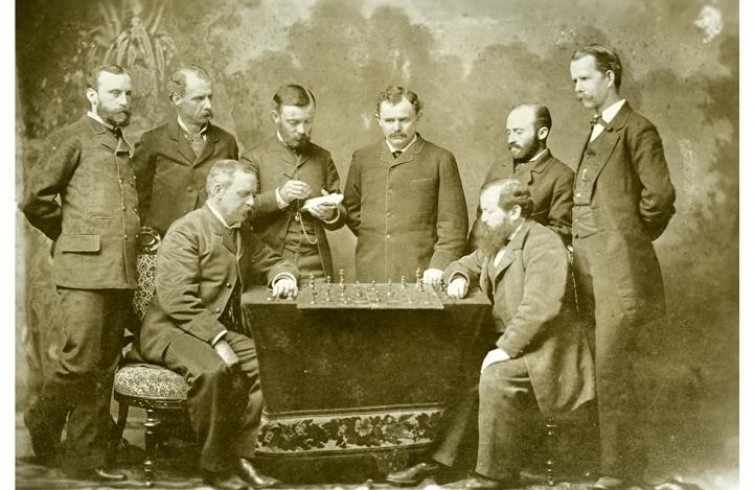Although Steinitz scored a convincing victory in his match against Chigorin in 1889, he couldn’t sleep in peace for too long. There was an abundance of strong chess players in the late 1880s and many of them regarded they should have a legitimate shot at a crown. Considering that there was nothing resembling an official qualifying cycle, it was up to the champion to handpick a challenger. And since Steinitz was very principled man, he didn’t hide behind his World Championship title, but prefered to play the next match as soon as possible.
Isidor Gunsberg was one of those strong players. He distinguished himself with numerous tournament victories in the 80. In the 1889, a strong New York tournament was held. Unofficialy, it can be regarded as the first candidates tournament in the chess history; the winner was to issue a formal challenge to Steinitz within a month.

However, both the surprising winner, Max Weiss, and the runner-up, Mikhail Chigorin, had no interest to challenge Steinitz to a match. Thus, third place winner Gunsberg gained the right to challenge Steinitz. Considering that only a year earlier he claimed his play should become more mature before challenging Steinitz, he chose an alternative path. He challenged the World Championship Runner up Mikhail Chigorin to a match, instead. This match, a prototype of the modern „Final Candidates Match“, ended in a +9-9=5 draw. After the match, he issued a formal challenge to Steinitz, the latter accepted and eleven months later they met in a match for the title of the World Champion.
The match was held in the New York City. The players had one hour and 45 minutes for the first 26 moves, and additional hour for every next 15 moves. In contrast to the previous world championship matches, the number of the games was limited to 20. In the event of the 9-9 result, the match would be declared drawn. (The complete rules can be found on the Edward Winter website).
In contrast to the match against Chigorin, this one wasn’t so fierce. For today’s standards players were extremely generous and chivalrous toward each other. Thus, in the sixth game, Steinitz refused to claim a win on time (although he did win this game in the end). Gunsberg, in return, refused to claim a default win in the 18th game when Steinitz didn’t appear.
Like Chogirn, Gunsberg mainly played the Evans Gambit with the White pieces, but his style wasn’t as violent. He was able to compete against Steinitz in strategical positions as well. His wins in the fourth game in a quiet Giuoco Piano and in the fifth game in a Queen’s gambit accepted variation were entirely positional. Nevertheless, although he proved to be a tough nut to crack, Steinitz’s mastery prevailed and with the 10.5-8.5 win (or +6-4=9) he won the match before the schedule and remained the World Champion.


Pingback: Isidor Gunsberg: Battersea's strongest ever chess player